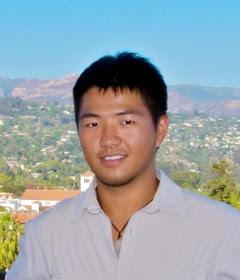NORMAN, OKLA. – When thinking about how an earthquake changes the surface of the Earth, many people conjure images of dramatic pictures of devastating earthquakes in which city streets are split or fields of crops are damaged from the moving ground. While these changes are easy to spot after large earthquakes, they also happen in far less noticeable ways after small earthquakes.
According to a recent study in Sciences Advances, “Coevolving early afterslip and aftershock signatures of a San Andreas fault rupture,” by University of Oklahoma School of Geosciences assistant professor Junle Jiang and a team of researchers from the Scripps Institute of Oceanography in La Jolla, California, microscopic changes in the Earth’s surface are important to monitor because those changes can contribute to additional stress on a fault, causing aftershocks and associated damage.
The U.S. Geological Survey describes aftershocks as the smaller earthquakes that happen in the general area during the days to years following a larger earthquake or mainshock.
For their research project, Jiang and his team observed a magnitude-six earthquake along the San Andreas Fault and subsequent seismic activity. The team studied the earthquake and aftershocks using traditional seismology methods, such as analyzing seismograms that record ground shaking. They also coordinated with NASA to undertake the first-of-its-kind application of high-rate space geodesy, which studies the changing shape of the Earth’s surface using sensors on the surface that are continuously monitored by the Global Positioning System satellites.
By deploying a large network of GPS sensors, geologists could track and record the symphonic and sustained movement of the Earth’s surface during and after a major earthquake down to the millimeter. The sensors recorded changes in multiple dimensions, meaning researchers could track the surface’s changes both in cardinal directions (north, south, east or west) and in height or depth.
“Our network of sensors revealed an unprecedented, up-close look at the complex fault zone motion in the minutes and days after an earthquake,” said Jiang. “It gave us a new understanding of the relationship between a large earthquake and its aftershocks.”
Jiang and his team verified that in many instances, aftershocks that radiated seismic waves were driven by bursts of slow-moving, back-and-forth fault movements. In short, the mainshock changed the surface of the Earth, and the moving surface caused new stress, which caused aftershocks. The team also verified this relationship exists in both microscopic and larger seismic events.
IMPACT TO OKLAHOMA
Jiang joined the faculty at OU in 2020, having conducted his research on the earthquakes, fault zones and geothermal fields in California as a postdoctoral scholar at the Scripps Institute of Oceanography and Cornell University.
“I chose to come to Oklahoma because I want to apply my research to the seismicity occurring here,” said Jiang. “What generates earthquakes and aftershocks in California and Oklahoma share many similarities.”
By employing his research expertise in areas like microseismicity and space geodesy, Jiang hopes to better understand both natural and induced seismicity in the state. By doing so, he believes scientists can increase safety and decrease societal impact from seismicity and other geohazards.
Jiang’s research is now part of the OU Mewbourne College of Earth and Energy School of Geoscience’s diverse research portfolio, where many faculty members are studying induced seismicity from a variety of angles. Together, their research has already created greater understanding of induced seismicity, which has resulted in new practices and led to a decrease in induced seismicity throughout the state.


